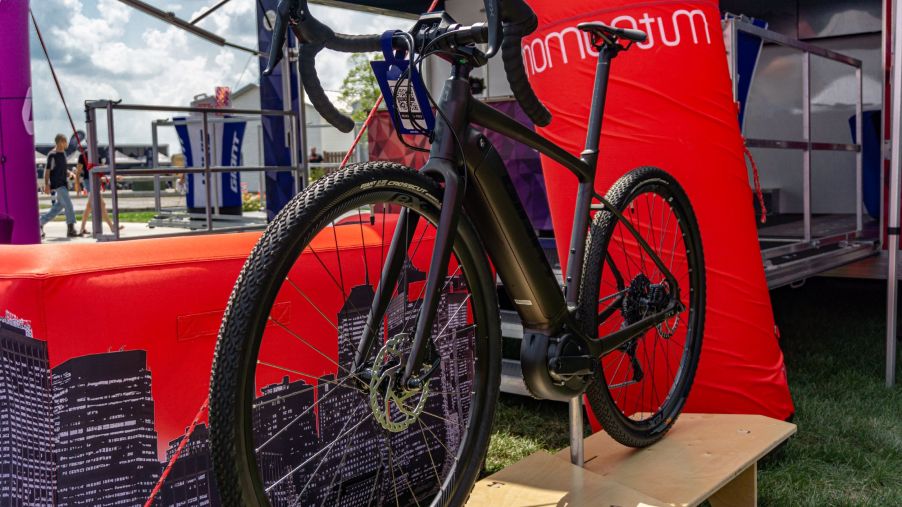
The Giant Revolt E+ Pro Will Turn Cyclists Into E-Bike Converts
Some cyclists consider electric bicycles to be ‘cheater machines’ for how quickly their electric motors let riders accelerate. But e-bikes aren’t in the same EV category as electric motorcycles. While some may have throttles, they all offer pedal assistance. So, just like on a ‘conventional’ or ‘muscle’ bicycle, you still pedal an e-bike: no cheating here. And if some purists need further convincing, they should consider taking the Giant Revolt E+ Pro for a spin.
How does the Giant Revolt E+ Pro gravel e-bike compare to the non-electric version?
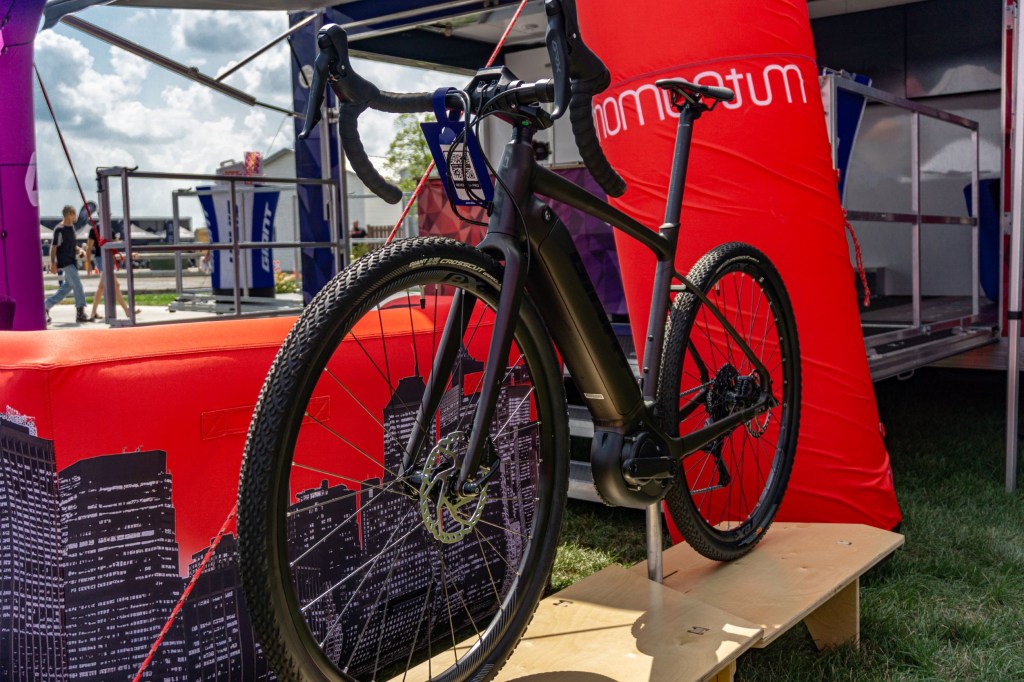
| Spec | 2021 Giant Revolt E+ Pro | 2021 Giant Revolt Advanced Pro 1 |
| Frame material | Aluminum | Carbon fiber |
| Front derailleur | N/A | Shimano GRX RX-815 Di2 |
| Rear derailleur | Shimano RD-RX812 GRX 11-speed | Shimano GRX RX-815 Di2 with Ultegra 11-speed |
| Brakes | Shimano BR-RX810 GRX hydraulic discs | Shimano GRX RX810 hydraulic discs |
| Motor | Giant SyncDrive Pro | N/A |
| Motor torque | 59 lb-ft | N/A |
| Battery capacity | 500 Wh | N/A |
| Claimed range | 25-90 miles | N/A |
| Weight | 39.2 lbs (Medium, eBike24) | 15.5 lbs (Medium Pro 0, Bicycling) |
| MSRP | $5000 | $5150 |
At first glance, the 2021 Giant Revolt E+ Pro doesn’t appear to be very similar to its non-electric brethren. For example, rather than carbon fiber, its frame is aluminum. And it weighs more than twice as much as the Revolt Advanced Pro 1, due in part to its electric motor and battery.
However, looking at these bikes’ geometry, it’s clear that they’re related. Plus, although the Giant Revolt E+ Pro has a mechanical derailleur, it is compatible with the electronic Di2 one. And both bicycles use virtually identical Shimano hydraulic disc brakes with 160mm rotors. Also, they both have composite forks.

The Giant Revolt E+ Pro might be heavier than its carbon-fiber cousin, but it’s not exactly slow. This is a Class 3 Giant e-bike, meaning it provides pedal assistance up to 28 mph. That much assistance does chew through charge quickly, though. But that’s why it has a handlebar-mounted controller to change between five different assist modes. And besides showing your riding mode, the built-in backlit display also shows the odometer as well as the remaining range and charge.
Unlike some e-bikes, the Giant Revolt E+ Pro’s battery isn’t removable for charging. Instead, it’s integrated into the frame, which cleans up the lines and lowers the bike’s center of gravity. And the latter is especially helpful when it comes to handling.
Hitting the dirt and gravel at IMS Chicago 2021

As their name suggests, gravel bikes are designed to handle the bumps and knocks associated with cycling on gravel roads. While they don’t have suspension, their forks and frames are designed to absorb impacts without compromising handling. And unlike hardcore, racing-focused road bikes, they can accommodate multiple bottle cages, fenders, and luggage racks.
All of these qualities make them popular amongst bike-packers and long-distance cyclists crossing varied terrain. And it’s why gravel bikes are also called ‘adventure bikes.’ It’s also why I own one, a steel-framed Jamis Renegade.
That familiarity was one reason why I rode the Giant Revolt E+ Pro through the gravel testing course at IMS Outdoors Chicago 2021. The other reason was something that came up during my brief talk with a Giant representative.
He mentioned that while mountain, off-road, and cargo bike riders accepted e-bikes fairly easily, road cyclists were considerably more resistant to the idea. These cyclists feel like pedal assistance cheapens the effort they put into building muscle and technique. That hasn’t stopped Giant from developing a road e-bike, but it wasn’t available at the show. The Revolt E+ Pro was the next closest thing.
The Giant Revolt E+ Pro turned IMS Chicago 2021’s gravel course into a playground
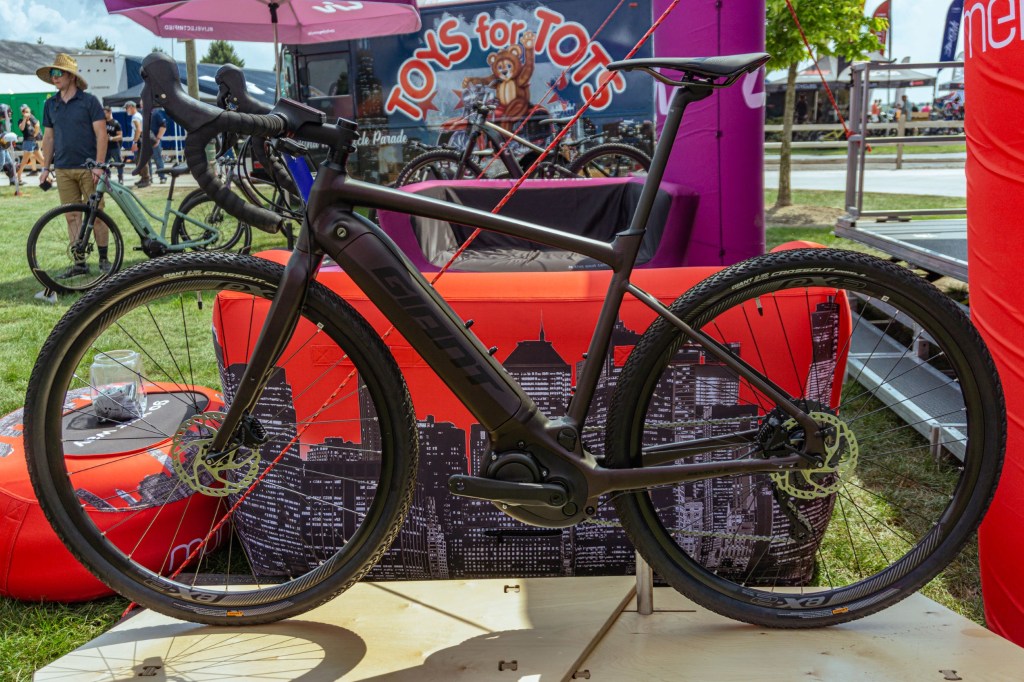
2021 Giant Revolt E+ Pro side view | Matthew Skwarczek, MotorBiscuit 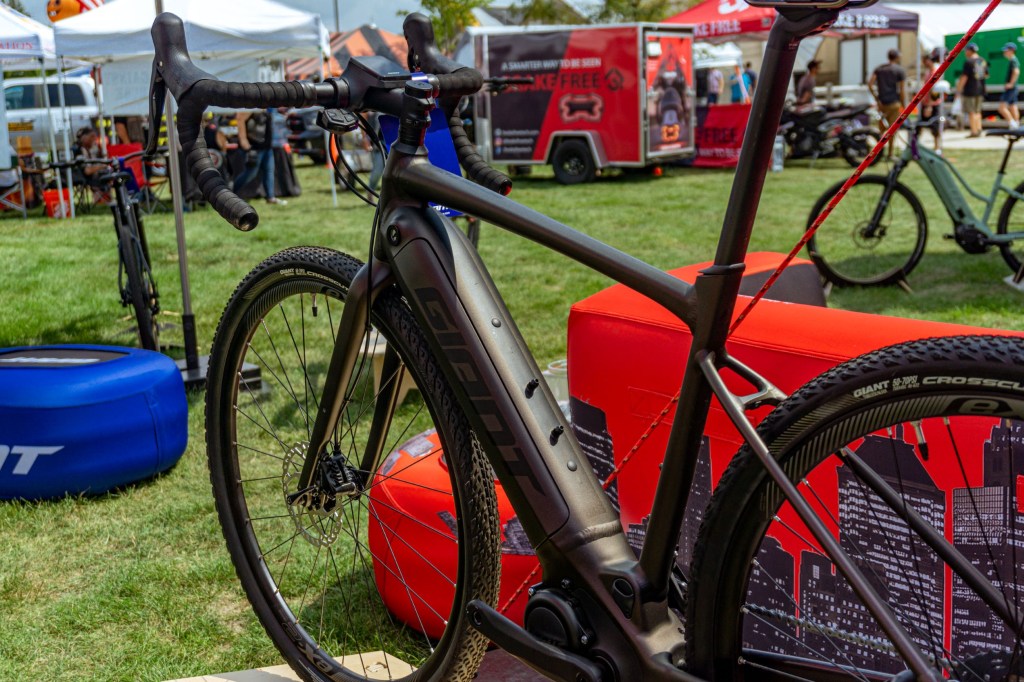
2021 Giant Revolt E+ Pro rear 3/4 view | Matthew Skwarczek, MotorBiscuit 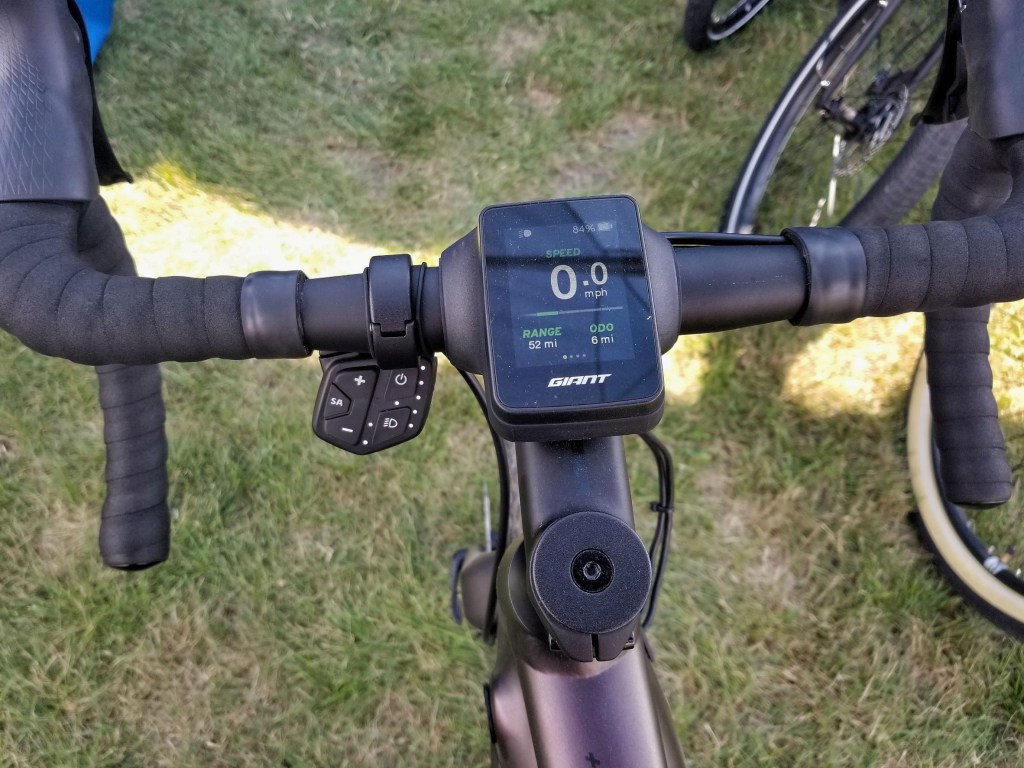
The 2021 Giant Revolt E+ Pro’s handlebar-mounted display and controller | Matthew Skwarczek, MotorBiscuit 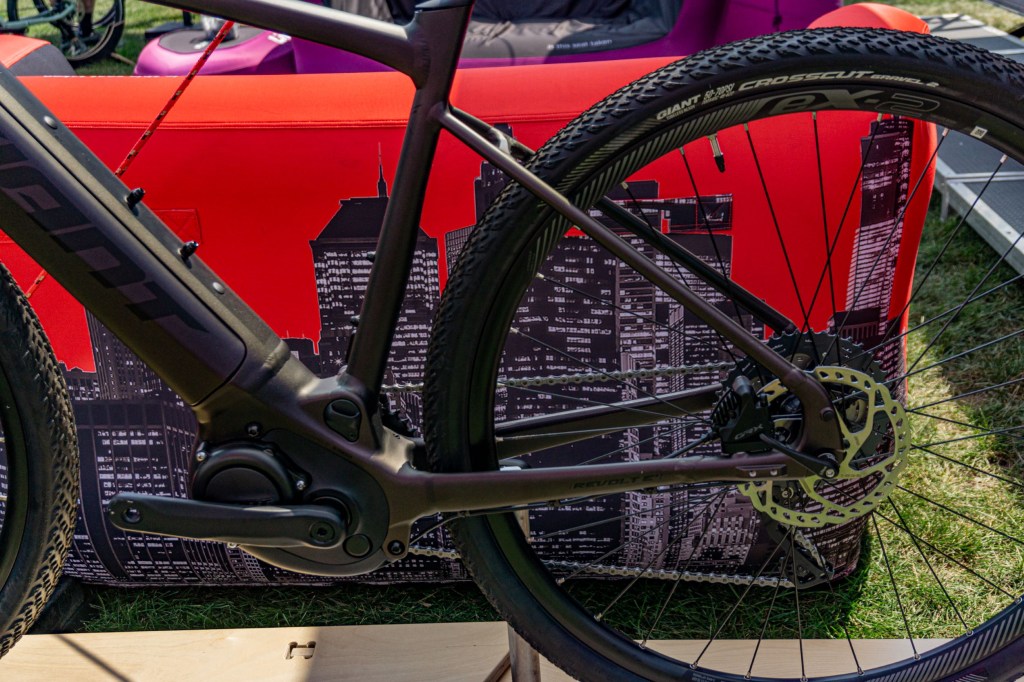
2021 Giant Revolt E+ Pro motor and rear derailleur closeup | Matthew Skwarczek, MotorBiscuit
However, riding an electric gravel bicycle around the IMS course was the furthest thing from a consolation prize. True, the pedal-assist means the Giant Revolt E+ Pro accelerates noticeably faster than with human effort alone. But it doesn’t cheapen anything: it just makes the experience more exhilarating.
Flying down a gravel-covered field at 25 mph is a laughter-inducing rush, especially when you’re on a bike designed for it. That rush builds in intensity as you move to the more aggressive riding modes. In Power Mode, the Giant e-bike practically explodes off the line. And yet, the motor’s assistance never feels uncontrolled or unrefined. Regardless of the mode, it always kicks in smoothly. Plus, even in bright sunlight, the display remains clear, though the push-button controls are somewhat awkwardly positioned.
While it appears heavy on a scale, the Revolt E+ Pro’s design means it handles like a lighter bike in the corners. And it’s stable even on loose gravel, thanks to its wide tires and frame design. Only severe impacts provoke discomfort at the handgrips, and those hydraulic brakes are suitably strong. In short, this is one fun gravel bike—one that just so happens to be electric.
Should you buy this electric gravel bike?
At $5000, the Giant Revolt E+ Pro isn’t the cheapest e-bike, though there are certainly more expensive models. But it’s not necessarily the priciest gravel e-bike, either. One of Bicycling’s recommended electric gravel bikes, the Cannondale Topstone Neo Carbon Lefty 3, costs $1300 more. However, it also comes with a carbon-fiber frame and front suspension.
So, is the Giant Revolt E+ Pro worth buying? That depends on your wants and needs. If you want an electric bicycle that can go beyond the city streets, it is a solid option. And it’s cheaper and lighter than an electric mountain bike. But if you just want a zippy urban commuter, it might be overkill.
That being said, as an experienced cyclist, I didn’t walk away from my ride feeling like I cheated. Nor did I feel like my years of training were rendered meaningless by the Revolt E+ Pro’s electric motor. Getting to 25 mph still required powerful pedaling. E-bikes don’t replace human effort: they magnify it. And they also magnify your fun.
Follow more updates from MotorBiscuit on our Facebook page.


